
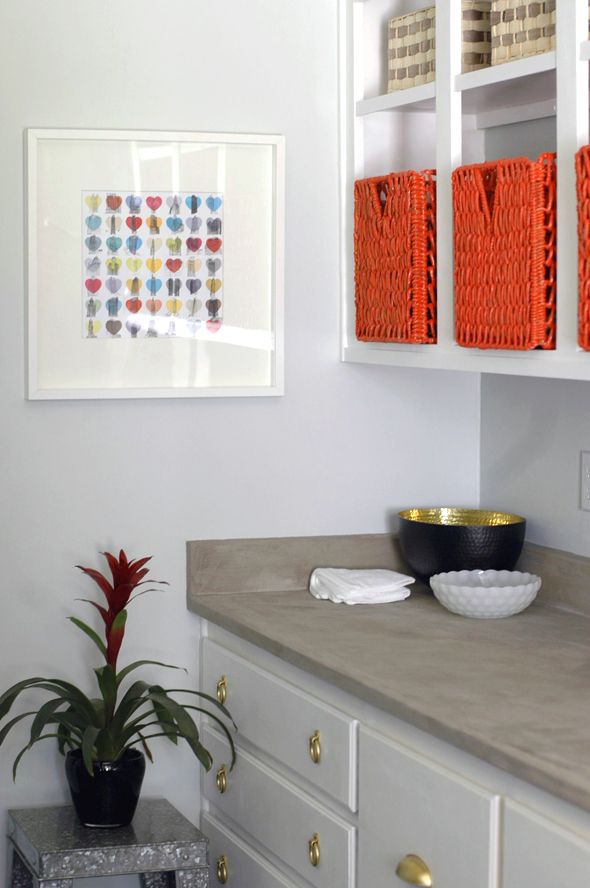
Let's jump in...
There are a few of these concrete overlay tutorials floating around the web. I used this search on Pinterest to find the best ones (this one from Kara Paslay Designs was my favorite). You might want to look around yourself and find a tutorial that works with your existing countertops, though the concept is pretty much the same across the board.

The hardest part (which is not all that hard) might be hunting down the concrete. The stuff you need to find is called Ardex Feather Finish. You can look on the Ardex website for local distributors, but it's easiest to just call their toll-free line for the info. There were like six distributors in Phoenix, so I'm sure you'll be able to find some in your area. A 10-pound bag cost me only $15 and I needed about half a bag for my laundry room. So cheap, right!?

I was talking to a contractor friend about this product (which is a concrete-PVC mixture I guess) and he said he uses it all the time and that everyone he know has been raving about this stuff for the past couple years - it layers on top of and easily binds to just about any surface. He said that any time you see a concrete floor in a retail space it's more than likely this product, which made me feel good about it's durability.
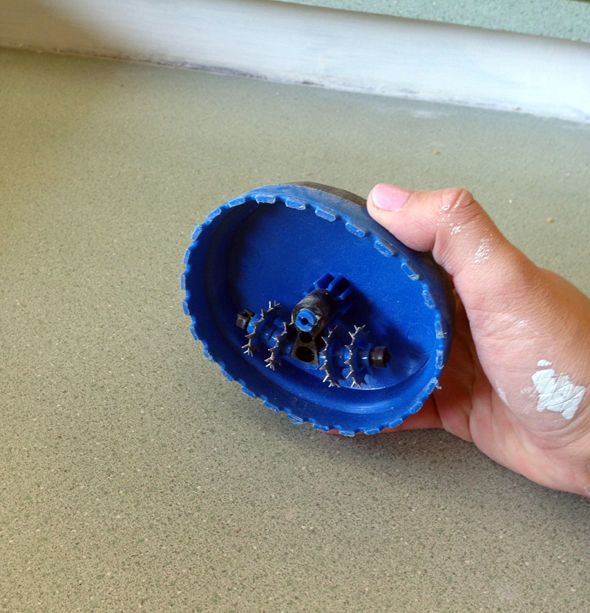
Even though the Feather Finish binds to flat surfaces, it's a good idea to really rough up your old counters before layering on the concrete, just to be safe. I used a wallpaper scoring tool and that worked pretty well. I think even just a good sanding with course-grit sandpaper would work.
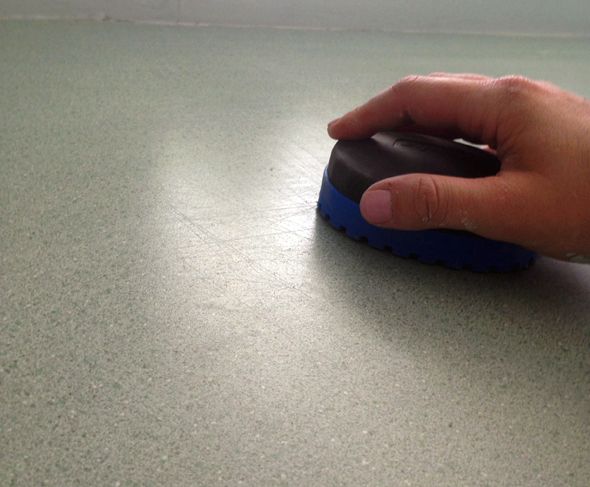
Once your surface is prepped, you just mix a small batch of concrete in a medium size bowl. There's not really a formula, so I just added water from a cup until I got a good consistency. I think like a thick gravy is about what you're shooting for.

You should follow the instructions on the back of the bag. You're supposed to mix the concrete, let it sit for about 10 minutes to do a quick set and then mix it again before troweling on. It's hard to mess this stuff up though, so don't be intimidated by the idea of mixing concrete.

We used a long drywall knife to spread on the concrete mix. It is exactly like frosting a cake. If you can make a peanut butter sandwich, you can have concrete counters.

Just like with painting, the secret is to work in multiple thin layers. Try to keep trowel marks to a minimum, but don't worry about each layer being perfect. You can sand off any imperfections later anyway.

This was when my first layer was about halfway dry. You can see I didn't cover up all the green in my first layer, which was no big deal at all. I think I ended up doing three or four layers, but you can do as many as you want.

The secret to getting this stuff really tough is to give each layer a good sanding. I hand sanded the first two layers and used my electric sander for the last two. The sanding removes a lot of the soft stuff from the mixture and leaves you with a really hard surface that continues to harden over a day or two of drying.

I used my little putty knife a lot too in the clean up process. I used it to sort of plane off bumps and wrinkles before sanding and to scrape down my walls.
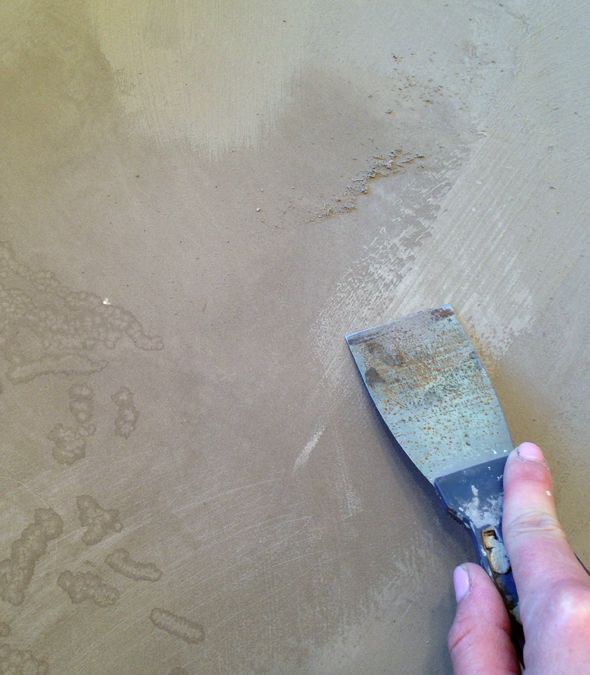
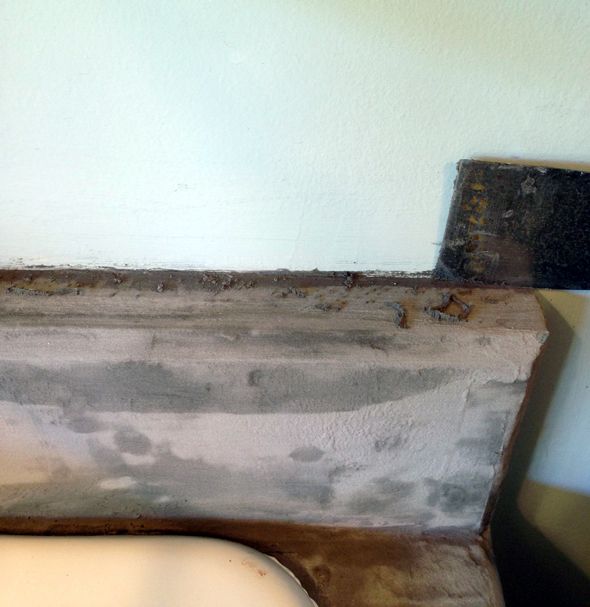
I also used it to score in a seam line anywhere there should have been an edge if the counters had been made of solid concrete slabs. I think this little step helped the look so much!

As the final layers go on and get their sanding, it is so fun to see the natural patterns and bubbles in the concrete emerge. I wanted to preserve that raw concrete look as much as possible.

I purposefully left some of my trowel knife marks to give the concrete some character, but you can make these as smooth as you like.
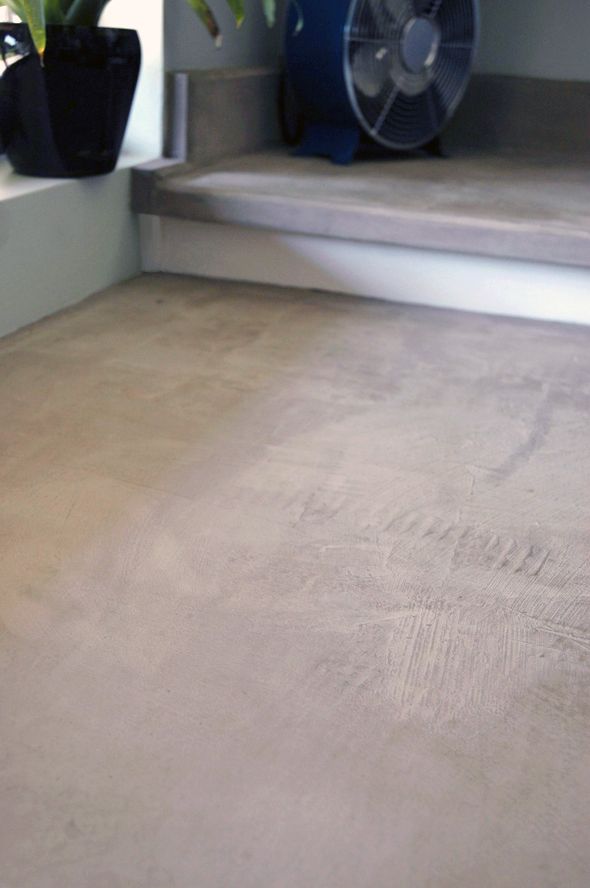
So to keep the natural concrete look and to keep the concrete really light, I used a matte finish sealer from the Home Depot. I think this one is a little more on the light-duty side. If my concrete gets wet, it darkens until it dries again (sort of like soapstone). It's not soft when it's wet though, it's completely durable as far as I can tell. You might want to do some sealer experimenting if you're trying this in your kitchen. I think the heavier sealer will make your counters permanently darker, but they will definitely keep all the moisture out.

I basically fully saturated my concrete with the sealer at least twice to really let the sealer seep down into the concrete.
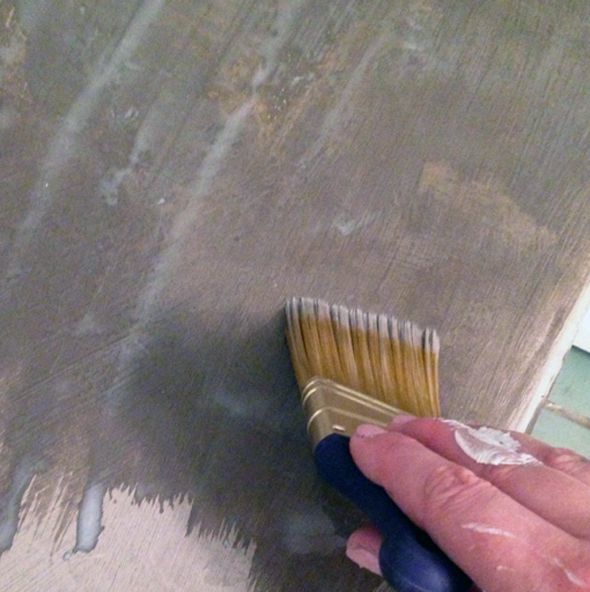
I'll probably reapply the sealer every year or so, but it's been a couple weeks now of use and I still love these concrete counters. They are wearing really well. I spilled some detergent by the sink last week and was relieved that there was no staining or discoloration. Not that I expected there to be, but I have been a little skeptical that these counters could be so good while being so easy to DIY and so affordable. I'll be sure to update you all if my opinion changes, but so far these are not at all too good to be true. Two thumbs way up for Ardex Feather Finish.
Update: Because I only recently made these counters for a limited-use space, it's not 100% fair for me to recommend this method in a kitchen application. I don't know how it would hold up with constant use. I think if I were you, I would buy a piece of plywood first and do a practice run. Maybe even cut the plywood to fit your countertop and live with it sitting on top of your old counters for a week or so to see how you like it. Kara Paslay Designs posted a similar tutorial here look like she and her husband know a lot about concrete (they teach a class on it) and they recommended this application for kitchens, so I know some people do it and like it. I think it's worth a practice run first though for such a huge commitment! xo
Update: Because I only recently made these counters for a limited-use space, it's not 100% fair for me to recommend this method in a kitchen application. I don't know how it would hold up with constant use. I think if I were you, I would buy a piece of plywood first and do a practice run. Maybe even cut the plywood to fit your countertop and live with it sitting on top of your old counters for a week or so to see how you like it. Kara Paslay Designs posted a similar tutorial here look like she and her husband know a lot about concrete (they teach a class on it) and they recommended this application for kitchens, so I know some people do it and like it. I think it's worth a practice run first though for such a huge commitment! xo
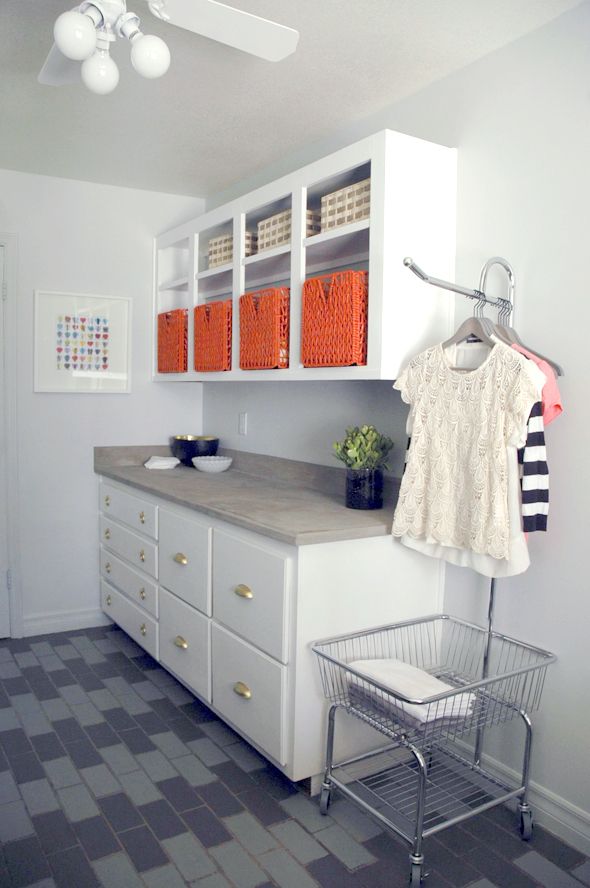



0 comments:
Post a Comment